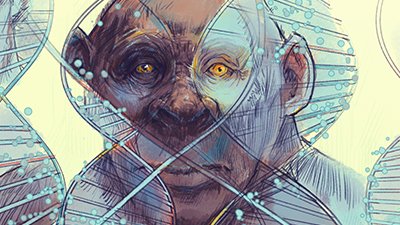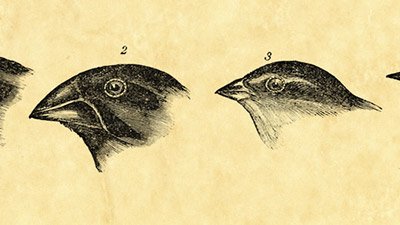
Robots and Evolution
AP: “Robots with Fins, Tails Demonstrate Evolution” Laboratory scientists designing robots, then making changes to improve the robots’ success—is that really evolution?
We’ve reported before on scientists using robots to (allegedly) imitate evolution—see February 14 of this year and February 24, 2007. Now, another team is trying to simulate evolution through sophisticated robots.
“We’re applying selection, just like natural selection.”
The two robots are called Tadiator (the predator) and Preyro (the prey), and together they act out their own ecological system, swimming in a laboratory pool at Vassar College. Because each is capable of swimming, scientists can modify Preyro’s tail to try to help it avoid Tadiator.
“We’re applying selection, just like natural selection,” said John Long, a Vassar biology and cognitive science professor. Long believes the process is helping scientists better understand why certain animals (swimming animals, in this case) evolved to swim the way the do (supposedly)—or did, in the case of extinct creatures.
Long and his students alter the stiffness of Preyro’s backbone with plastic rungs and a column that runs along the tail. Changing that variable, not the size of Preyro’s tail, helps it escape Tadiator more effectively.
Another of Long’s robots, called Madeleine, investigates why an ancient pliosaur called Predator X used two sets of flippers to swim, unlike modern animals that use one set of flippers to move and the other to steer. Long concluded that while the four-flipper approach to swimming is less efficient overall, it does allow faster acceleration, perhaps a key to catching prey.
Comparing his research to computer simulations, Long noted, “The thing about robots is, robots can’t violate the laws of physics. A computer program can.”
Although such simulations can certainly be useful testbeds for understanding why creatures are designed the way they are, nothing about the simulations confirms evolution. On the contrary, Long and his students are intelligent agents who intentionally design and redesign the robot anatomy, much closer to artificial selection than natural selection. Robots are a terrific reminder that intelligent design explains complex structures at least as well as—and usually far better than—evolutionary ideas.
For more information:
Remember, if you see a news story that might merit some attention, let us know about it! (Note: if the story originates from the Associated Press, Fox News, MSNBC, the New York Times, or another major national media outlet, we will most likely have already heard about it.) And thanks to all of our readers who have submitted great news tips to us.
(Please note that links will take you directly to the source. Answers in Genesis is not responsible for content on the websites to which we refer. For more information, please see our Privacy Policy.)
Recommended Resources

Answers in Genesis is an apologetics ministry, dedicated to helping Christians defend their faith and proclaim the good news of Jesus Christ.
- Customer Service 800.778.3390
- © 2024 Answers in Genesis






